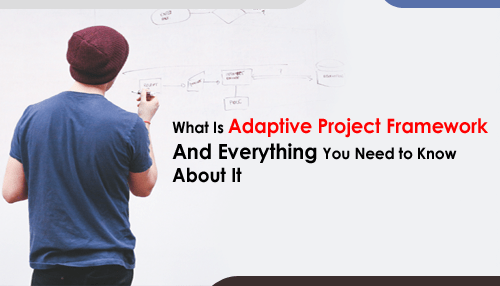The project management world is constantly changing. The reason for this hides behind the fact that project managers are always looking for ways to improve productivity, reduce costs, and always deliver within the deadline. This is why adaptive project framework is an approach practiced by successful project managers. It is quite different than traditional approaches, however, the goal is the same. It aims at making the workflow flawless, even when an obstacle pops up in the process.
Let’s go into a couple of details about adaptive project framework and how it can help you better manage your projects.
What is adaptive project framework?
In traditional project management, the role of the manager is to stick with the set of instruction received from the higher authority or the client. While this is the right approach, as he or she is going to respect their wishes, there are many circumstances that can cause problems in the project development phase. Usually, this leads to complications and this causes delays, causing credibility and financial losses.
This is why companies opt to introduce adaptive project framework. While the goal of this approach is the same as standard project management, there is a huge difference in the whole process.
The primary difference lies in the way the project manager approaches the organizational process. He or she has a task to create a flexible plan, that provides more room from improvisation to get the job tone. The project manager using adaptive project framework must dedicate a lot of time for anticipating any problems from the client-provided instructions. He must ask the following questions.
Are these instructions enough? – This is the first part where a lot of problems arise. Some clients tend to provide superficial information. Without clear instructions, a project can go in several different directions.
Therefore, if the client does not have a clear set of rules, the project manager can devise several different scenarios in which the team can approach the project. This will make them prepared to provide several solutions to the client and moving on swiftly towards finishing the goal.
1. What can I do to deliver more from the start?
Even if clear instructions are provided, they might not be the best option for the client’s goal. While respecting what he or she desires, the project manager can present different solutions to the client upon project completion. This makes the team look more professional, as they have gone the extra mile to offer alternatives.
2. Who is going to work on a particular task?
This is a question that regular project managers also use before planning a project. However, in adaptive project framework, the manager does not only think about who is going to work on the project, but what are the backup options if someone cannot come to work. This ensures higher adaptation possibilities without any negative effect on the project.
3. What is my workforce?
A project manager is to take a look at people’s schedules, see who is going to be away, who is already engaged with other projects, and they are to do this in order to create a sensible schedule for finishing the project within the given deadline.
These are the most important questions a project manager working with adaptive project framework must answer during the planning phase. To put it simply, there is much more problem anticipation in this approach, helping the project manager create a better plan for the whole team.
A Metaphorical Example
In his book, Robert K. Wysocki goes into detail about why this approach is great. To be better understood by his audience, he exemplifies the difference of being a project manager with traditional and adaptive project framework. Respectively, the first one is a cook whereas the other one is a chef.
What does this mean?
Well, the cook works with already existing recipes to make the food, whereas the chef actively thinks and works to create recipes.
One of the illustrations he has made is the process of making a cheesecake. But there is the vanilla extract missing. Without going to the store, making the cheesecake is possible because there is something else that can replace it. In his example, there was vanilla frosting that also contains the extract and that made it possible for the cheesecake to be made.
This makes it clear that the role of a project manager in adaptive project framework is adaptation. He or she must know all of the tools at their disposal when approaching the project. A big role is played by problem anticipation, enabling them to adapt fast without putting the project on pause.
What is the client’s role?
In traditional project management, the role of the client is to provide instructions and wait for the project completion. On the other hand, with agile project management, the role of the client is to provide initial instructions, but also appoint a person for communication while the project is worked on.
When it comes to adaptive project framework, there is a certain degree of involvement of the client. The client cooperates with the project manager to keep the project development aimed in the right direction. Wysocki expresses his opinion in terms of how this makes this project management approach unique. It can be concluded that the client has a greater role in the whole project development phase, to prevent project failure, delays, or any possible problems that might arise.
These are the most important things you should know about adaptive project frameworks. There is a thin line between traditional project management and agile project management. It is a perfect method for preventing any problems during project development.
With it, you can expect to deliver your projects on time, in close collaboration with your client. Many big companies are moving to this model of project management, as it is bridges all of the gaps that traditional project management had.
About Author:




